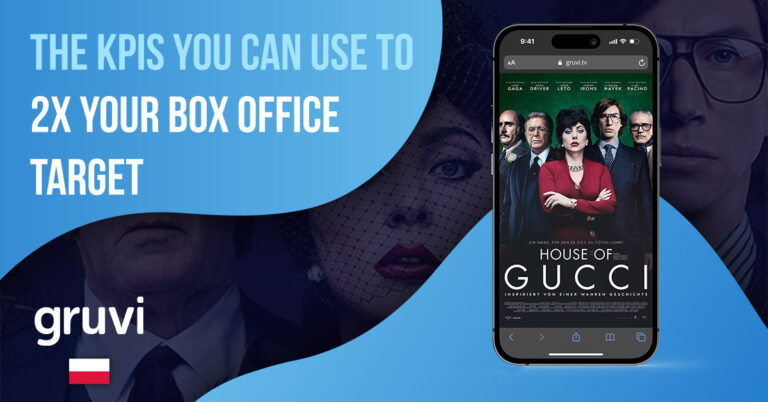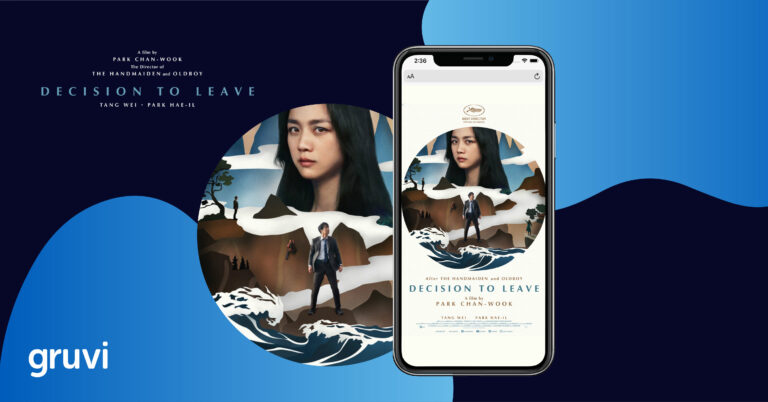Image versus Video, which is better for cinema ticket sales? Part 1

We integrated our tracking tools with the online ticketing system of the Grand Teatret cinema in Copenhagen, Denmark, to show how powerful online advertising can be in driving advance ticket sales for independent film. You can read more about the project here.We found that cinemas are missing out on an important revenue opportunity that can be exploited via digital marketing if the audience data collected from online ticket sales is subsequently incorporated into online advertising.
Key Findings
From previous case studies we saw that:
- Audiences that are drawn to a cinema website via ads for one particular film often navigate further around the site, viewing details of other films playing at the same date/time.
- This suggests that advertising the full range of films being shown at a cinema is an important tactic for cinema advertising, in addition to advertising individual titles.
- There is a strong correlation between a cinema ad and consumer behaviour, with 85% of people buying tickets with 24 hours of viewing an ad.
From this case study we found that:The weather may have had a significant factor on some of the results, as the first weekend of the campaign coincided with a record-breaking heatwave in Denmark.

The more expensive carousel ad format offered by Facebook delivers a disappointing ROA (Return On Advertising), ranging from 1.2 down to negative values.
Please note: this study is concerned with ticket sales only, the results do not take into account the further revenue generated from concession sales made by those cinemagoers that booked tickets as a result of viewing an ad.
Test 3 Summary: Facebook carousel ads
For this test we used Facebook’s carousel ad format, which can display a range of film poster images and therefore promote a number of different titles. Our aim was to see how effective these carousel images would be in encouraging users to explore the full range of titles showing at the cinema that week, and consequently purchase advance tickets online.
The test ran from May 28th to June 4th. The appropriate films showing that week to be included in the ad were selected by the cinema management team, with poster artwork for each title added manually to the carousel ad format. The selected films were:
- “Amundsen”
- “Dronningen”
- “En Spions Bekendelser” (aka “Red Joan”, UK)
- “Kvinde på krigsstien”
- “Lazzaro Den Lykkelige” (aka “Lazarro Felice”, Italy)
- “Værk uden skaber”
While the order of the featured films remained fixed within the ad, potential cinemagoers can nevertheless cycle through the range of titles.

Results:
The number of click throughs to each individual film were relatively consistent, showing that users viewed the full range of featured titles playing at the cinema that week.
The average Cost of Sales per Ticket was £8.33 (ticket costs £11.00) and this climbed to £10.98 if we only looked at sales generated within 24 hours of audiences seeing and engaging with the advert.

Test 4 summary: Facebook product catalogue ad
For this test, we used Facebook’s product catalogue feature. Our aim was to test Facebook’s Catalogue Sales Objective: to find users with the highest probability to purchase, by showing them the most appropriate product.
This ad format also displays a range of film posters and ticket prices for a number of titles, but it creates the ad automatically – the selected films are not chosen by hand, instead, they are taken from the automated data feed that tracks all films playing at the cinema during the week. The order of the films is also not fixed in this format, Facebook will present the films in the order it believes a particular user will have the most interest in.
The test ran from May 30th to June 5th and featured predominantly the same titles.

Results:
The average Cost of Sales per Ticket was £45.50 (ticket costs £11.00) and these sales all occurred within 24 hours of clicking on the ad.

Clearly, both tests did not work well. Overall Return on Investment (ROI) was negative when factoring the proportion of the revenue from each ticket sale paid to the distributor.
‘Costs Per Single Ticket Sold’ were significantly higher than for tests 1 & 2 in our previous study. We achieved one ticket sale for every 929 people reached and every 20th visit to the website – down from every 507 people reached and every 11th visit to the website in our previous study.
We saw a strong pattern emerge: as the number of clicks to a film’s showtimes increase, so does the cost of an individual ticket sale:
- Tests 2 – every 2.04 clicks generated a sale
- Test 3 – every 7 clicks generated a sale
- Test 4 – every 14.28 clicks generated a sale
CONCLUSION
The poor results of these tests are in part down to the following:
- The weather – the record-breaking European heatwave that took place over the opening weekend of our trial period seriously deterred potential cinemagoers
- Lack of video content – image based ads do not engage and are viewed as little more than purely informative
- Facebook’s Product Objective – this automated premium offering simply failed and does not work for subjective products such as film (the ad carousel curated by hand was far more effective)
If you would like to know more CONTACT US


